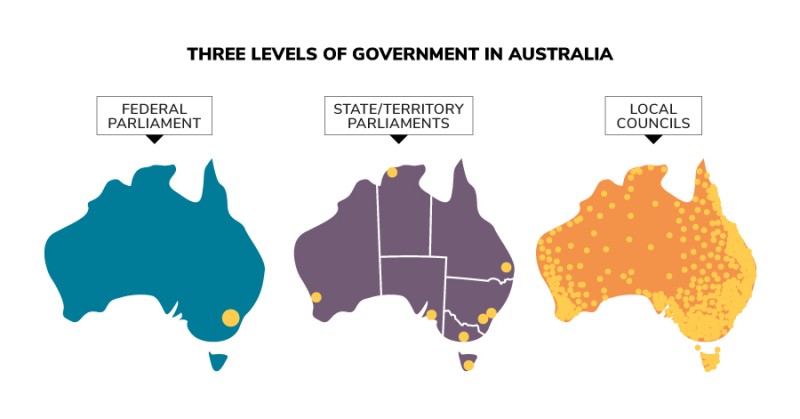Are there times when all three levels of government work together or are involved in one issue or project?
Thank you for your question, Rob.
Yes, there are times when all three levels of government work together. Each level of government has its own responsibilities, although sometimes these responsibilities overlap. On these occasions all three levels can work together on the same project.
Australia’s three levels of government are:
- federal (which makes laws in relation to defence, immigration, foreign affairs, trade, postal services and taxation)
- state (which makes laws in relation to hospitals, schools, police and housing services)
- local (which makes laws in relation to building regulations, rubbish collection, local roads and pet control).
An example of all three levels working together might be a road upgrade. The state government can own and manage the road, while the work is completed by a local council. The work could be paid for by a grant from the federal government.
Another example is childcare. A local council might run and staff a childcare centre, while the state government makes laws about safety checks and staff qualifications. The federal government can provide financial support for families putting their children into childcare.
However, it is more common for 2 levels of government to work together on projects, usually federal and state, or state and local. The reason for this is local governments are the responsibility of state governments and are not mentioned in the Australian Constitution. The Constitution does explain how the federal and state governments can share powers and work together.
Three levels of government in Australia

Parliamentary Education Office (peo.gov.au)
Description
The three levels of government – the law-making bodies in Australia. The Federal Parliament is located in Canberra, the nation's capital. State/territory parliaments are located in the capital cities of each of the 6 states and 2 territories. Local councils are located around Australia in each local council division.
This work is licensed under a Creative Commons Attribution-NonCommercial-NoDerivs 3.0 Unported License.
You are free to share – to copy, distribute and transmit the work.
Attribution – you must attribute the work in the manner specified by the author or licensor (but not in any way that suggests that they endorse you or your use of the work).
Non-commercial – you may not use this work for commercial purposes.
No derivative works – you may not alter, transform, or build upon this work.
Waiver – any of the above conditions can be waived if you get permission from the copyright holder.
